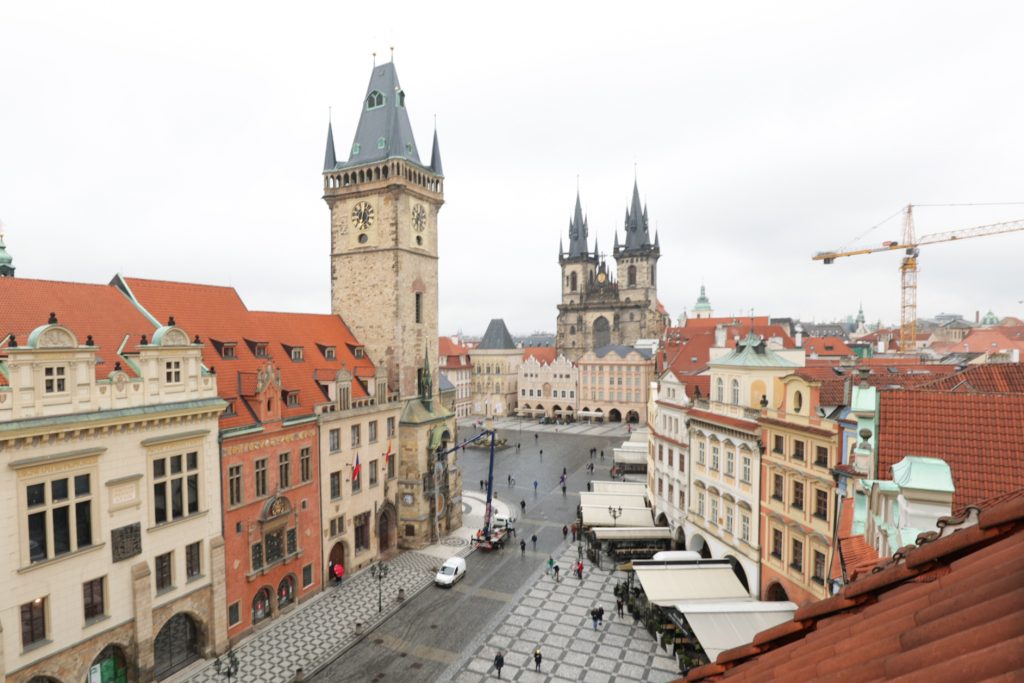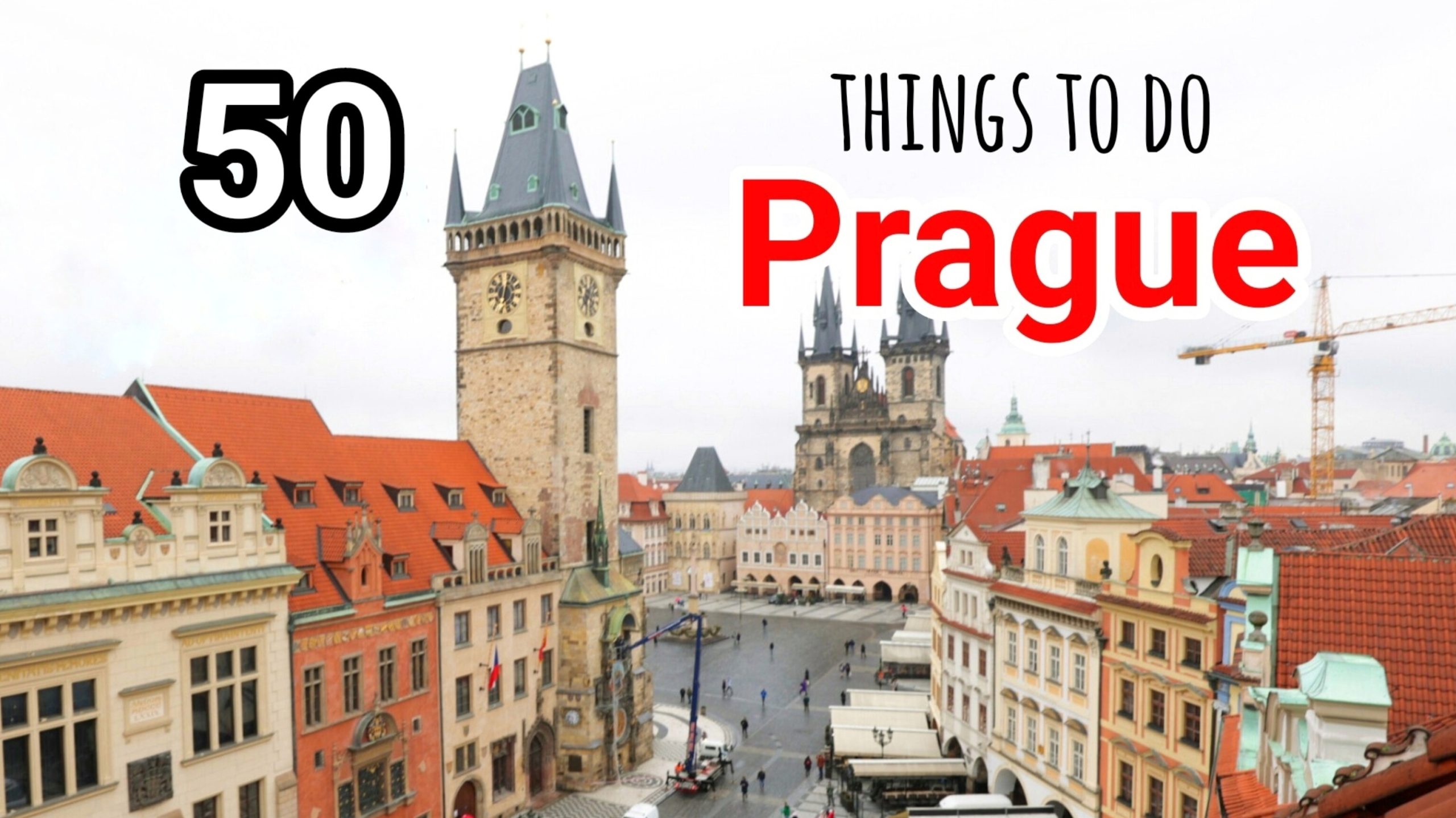Watch my video here: Prague | Top 50 things to do when you’re in Prague.
Are you going to visit Prague and do you want to know what you can do in Prague? Don’t worry, I’ve got you covered. I made you a ‘Top 50 things to do in Prague’ with places you should definitely visit when you are in Prague.
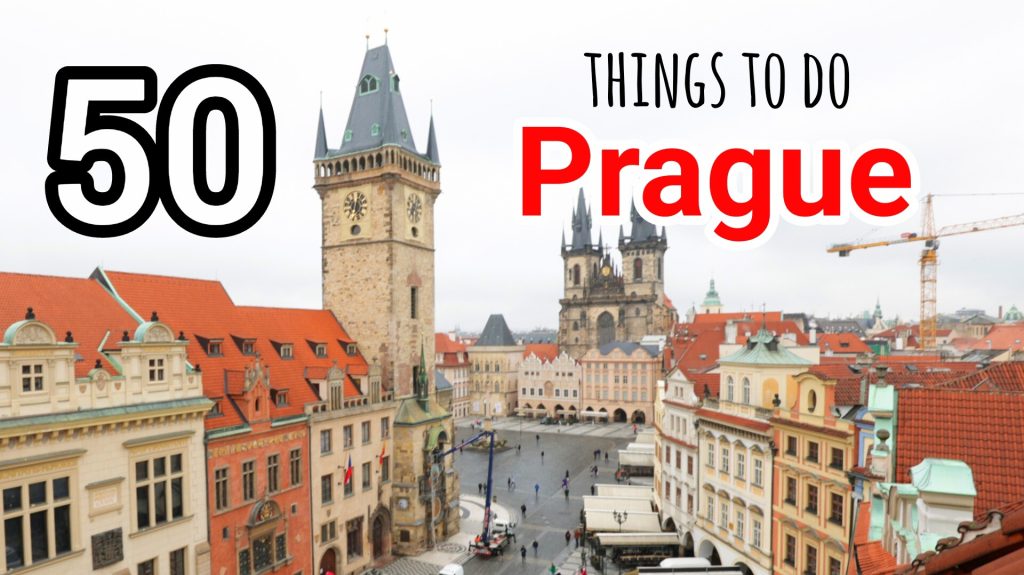
- Wenceslas Square. Prague’s main square is St. Wenceslas Square with shops, hotels, restaurants and clubs. Most of the buildings date from the early nineteenth and twentieth centuries and have beautiful Art Nouveau façades.
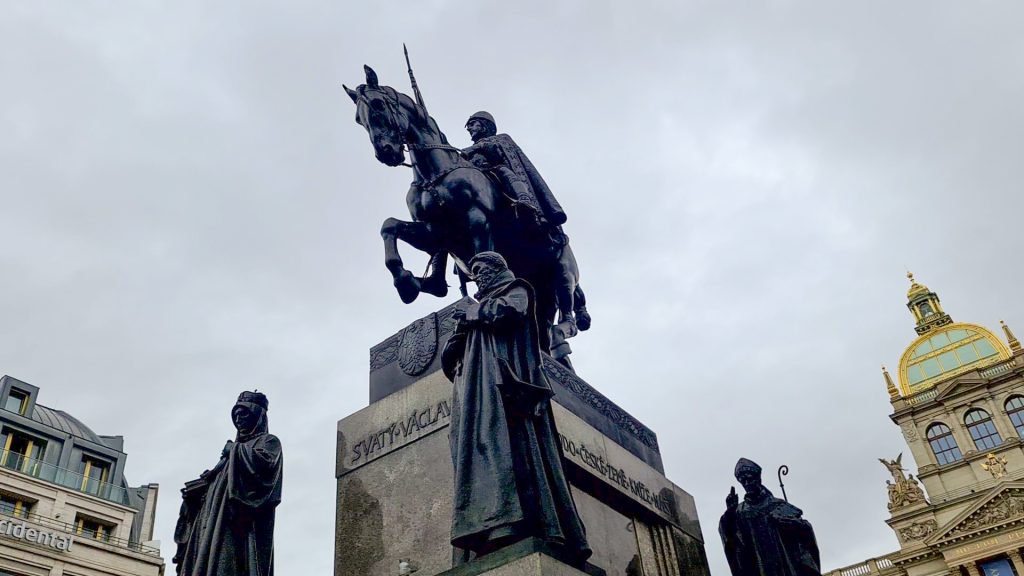
2. Statue of St. Wenceslas. St. Wenceslas (circa 905 – 929 or 935) was a Czech Duke and patron Saint of the Bohemian. In 1887-1924 the statue of St. Wenceslas was sculptured by Czech sculptor Josef Václav Myslbek. The statue is installed at Wenceslas Square.
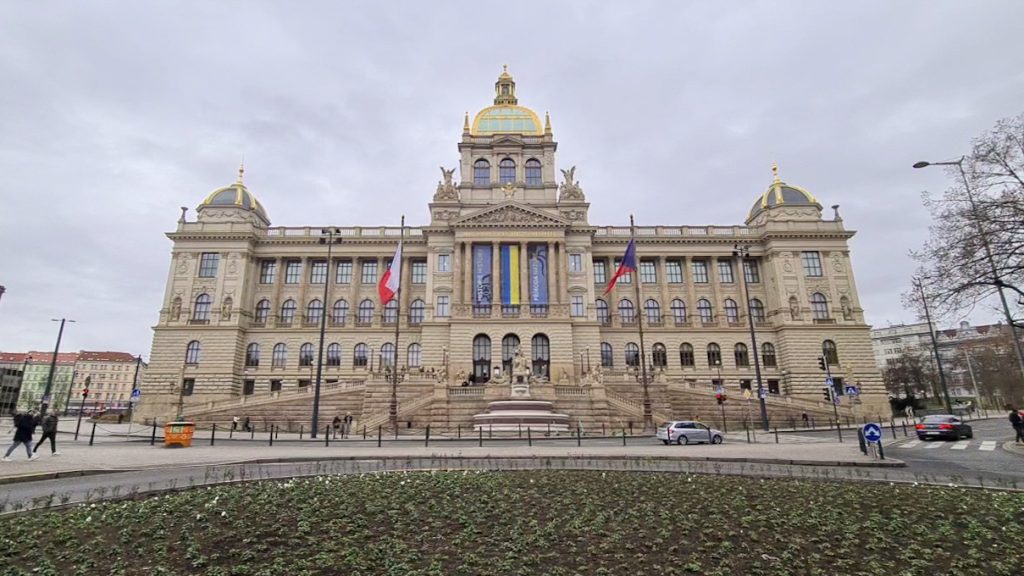
3. National Museum. The main building of the National Museum, located at the upper end of Wenceslas Square, was built from 1885-1891 by prominent Czech neo-renaissance architect Josef Schulz. It’s the largest museum in the Czech Republic.
4. Christmas market. During the Christmas Holiday season, Prague is a great place to visit their cozy, magical Christmas markets. The biggest and most popular Christmas markets are located at Wenceslas Square and the Old Town Square, but there are many other smaller Christmas markets in the city.

5. Trdnelník. The original trdnelník is a kind of spit cake. It’s a sweet pastry made from rolled dough that is wrapped around a stick, then grilled and topped with a sugar and walnut mix. Besides the hot grilled trdnelník from the Christmas market, we also tasted the trdnelník from a bakery callef TRDLO. The latter variant was filled with yogurt, blueberries and whipped cream and tasted better and fresher.
6. Church of St. Gall. The church in Havelská Street was built in the thirteenth century in Romanesque style. Its current Baroque façade was built between 1722-1738. The church is dedicated to svatý Havel or Saint Gall, an Irish abbot and the founder of the famous St. Gallen Monastery in Switzerland.
7. Havelský Market. Pragues best known outdoor market is Havelský Market, one of the oldest markets in Prague. The market dates back to 1232 and has been held in Havelská Street since. At the market they sell things like Prague chocolate, flowers, fresh vegetables and crafts.
8. Staré Město. The Old Town of Prague is with its central square the historic heart of medieval Prague. It’s a lively place with souvenir shops, restaurants, clubs, cafés, and theaters, providing lots of entertainment.
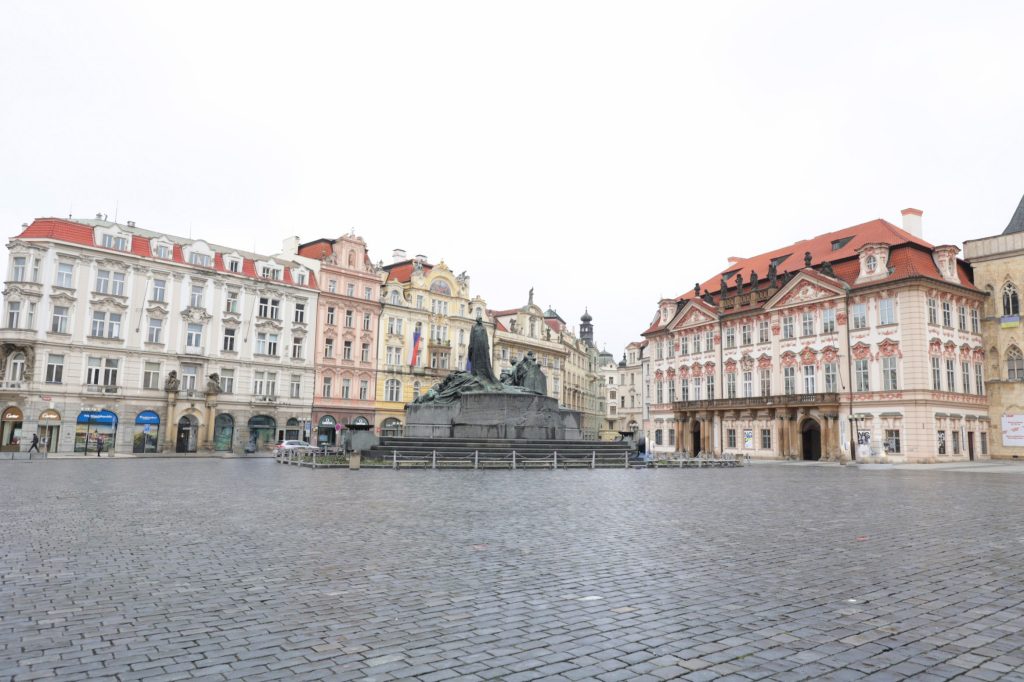
9. Staromětske Náměstí. The Old Town Square. The heart and soul of the city of Prague. When you visit Prague, you should not miss the Old Town Square. Ringed with many historic buildings, the founding of the Old Town Square dates back to the 11th century. A buzzling place with a lively atmosphere.

10. Astronomical Clock (Orloj). The Astronomical Clock is attached to the Old Town Hall. The clock was first installed in 1410, making it the third oldest astronomical clock in the world and the oldest clock still in operation. The clock not only tells the time, but also displays the movements of the sun and moon trough the signs of the zodiac.
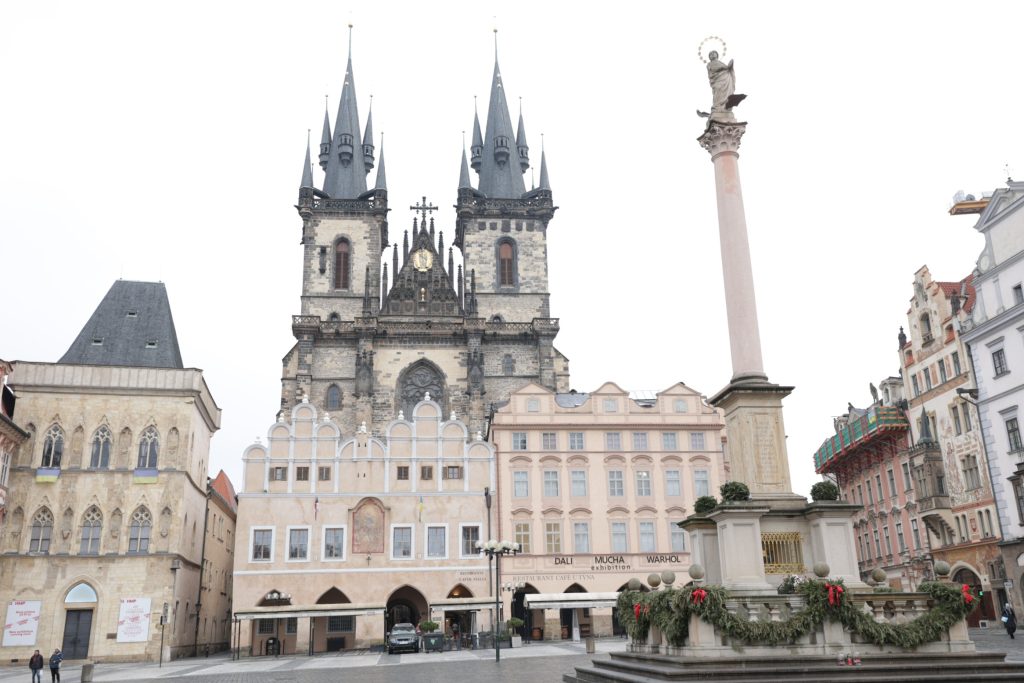
11. Church of our Lady before Týn. Dominating the Old Town Square, this historic church with its magnificent steeples is among the most beautiful Gothic buildings in Prague. The construction of this church started around 1350 and was finished around 1511.
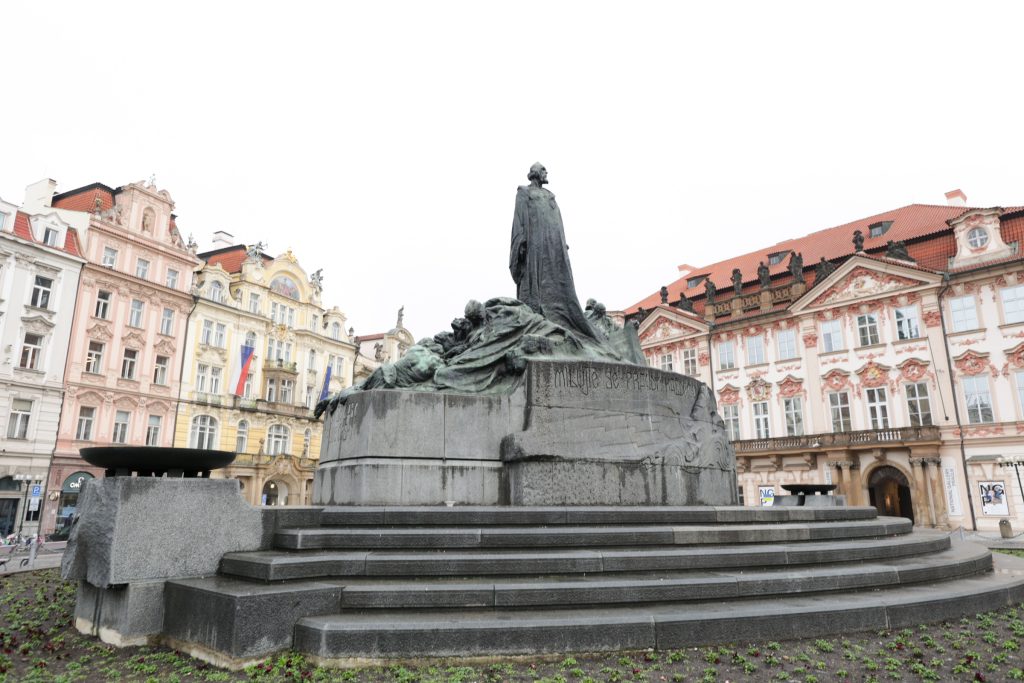
12. Jan Hus Monument. In the middle of the Old Town Square stands the famous Monument of Jan Hus, unveiled in 1915, in memory of the religious reformer Jan Hus. In 1415 Jan Hus was burned at the stakes, after being condemned by the Council of Constance.
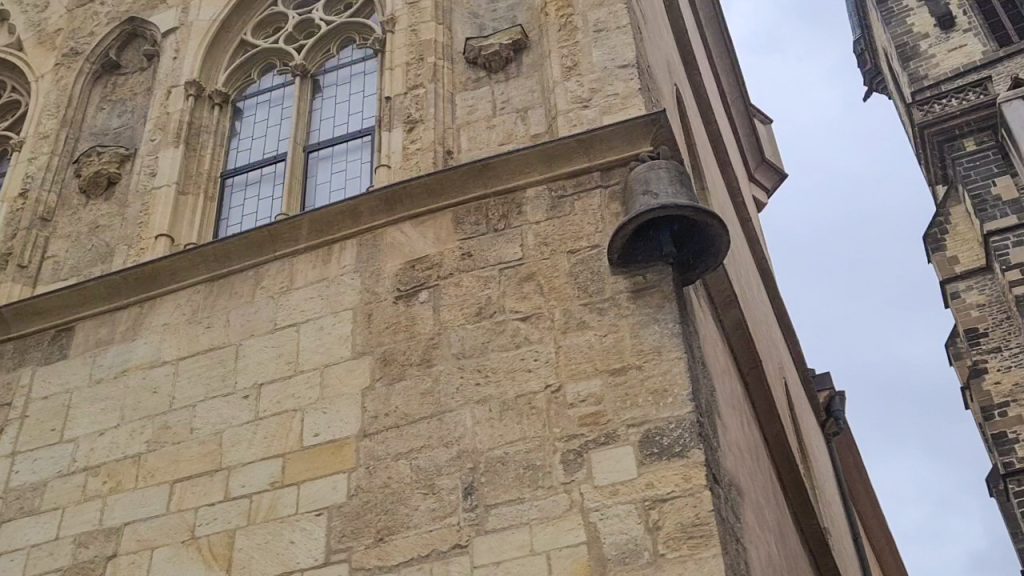
13. Stone Bell House. The Stone Bell House located at the Old Town Square is named after the bell embedded in the corner. The Stone Bell House is a Gothic building from the 13th century that used to be home to several noblemen.
14. The Golz-Kinský Palace. This beautiful Rococo palace with its pink-and-white stucco façade was built in 1765 for the Golz family and in 1768 it was sold to the Kinský family. The Golz-Kinský palace at the Old Town Square is now used by the National Gallery for its temorary exhibitions.
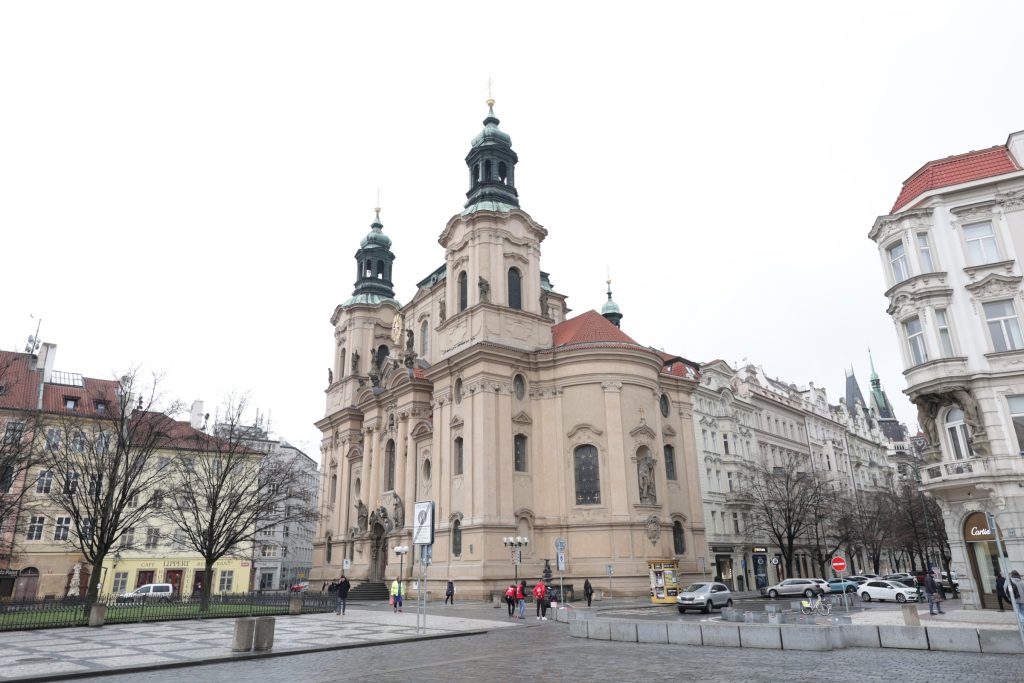
15. St. Nicholas Cathedral. This Late-Gothic and Baroque church was built between 1732 and 1737 dedicated to St. Nicholas. The St. Nicholas Cathedral at the Old Town Square is now a popular venue for live concerts and events.
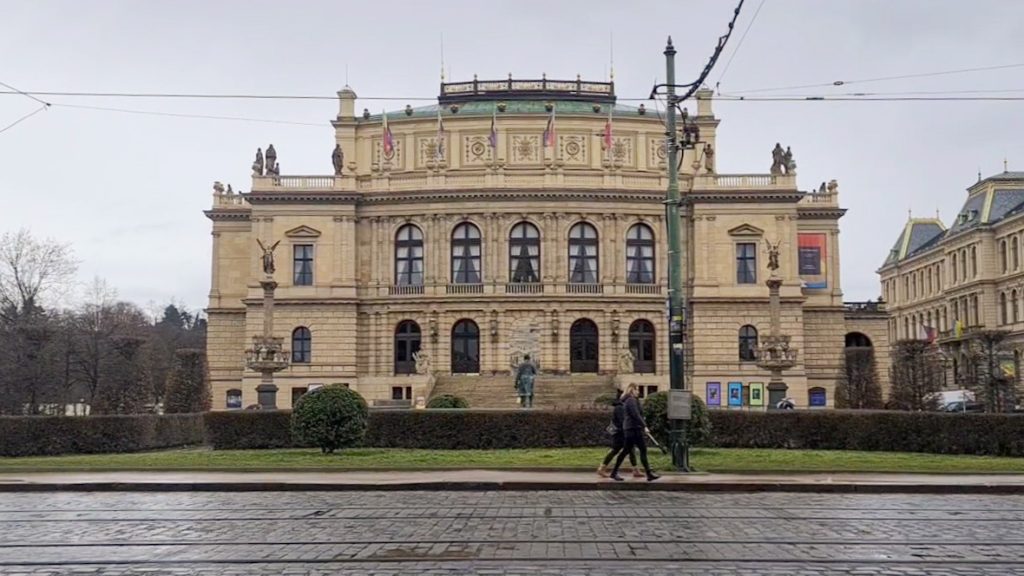
16. Rudolfinum. At the northern edge of the Old Town, located on Jan Palach Square on the bank of the Vltava river, is the Rudolfinum, a Neo-Renaissance building that opened in 1885. Associated with music and art, Rudolfinum is the home of the Czech Philharmonic Orchestra.
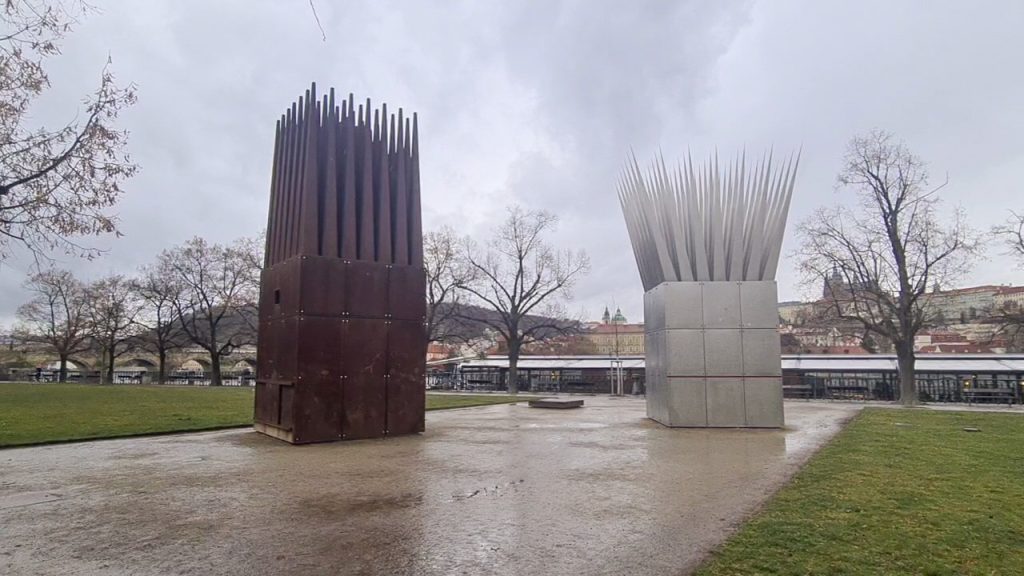
17. Jan Palach Memorial. The Jan Palach Memorial, located opposite the Rudolfinum, commemorates Jan Palach, a student who commited suicide on January 1969 in protest against the Sovjet occupation of Czechoslovakia.
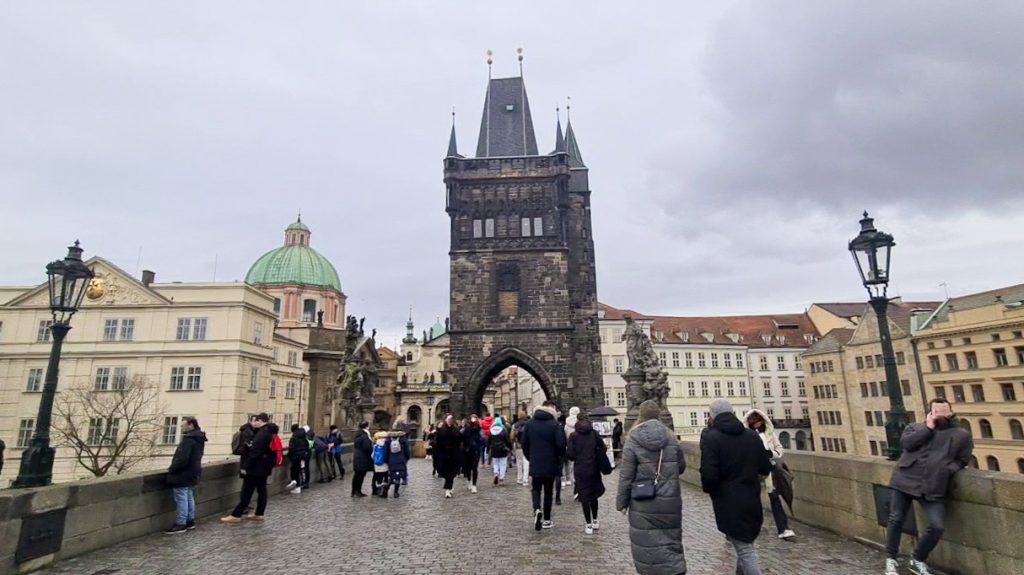
18. Charles Bridge. The spectacular Charles Bridge, Prague’s most familiar landmark, is the famous bridge over the Vltava River. In 1357, King Charles IV laid the foundation stone. This medieval stone arch bridge was built by architect Peter Parler in Ghotic style. The Charles Bridge connects the Old Town on one side with the Malá Strana district on the other.
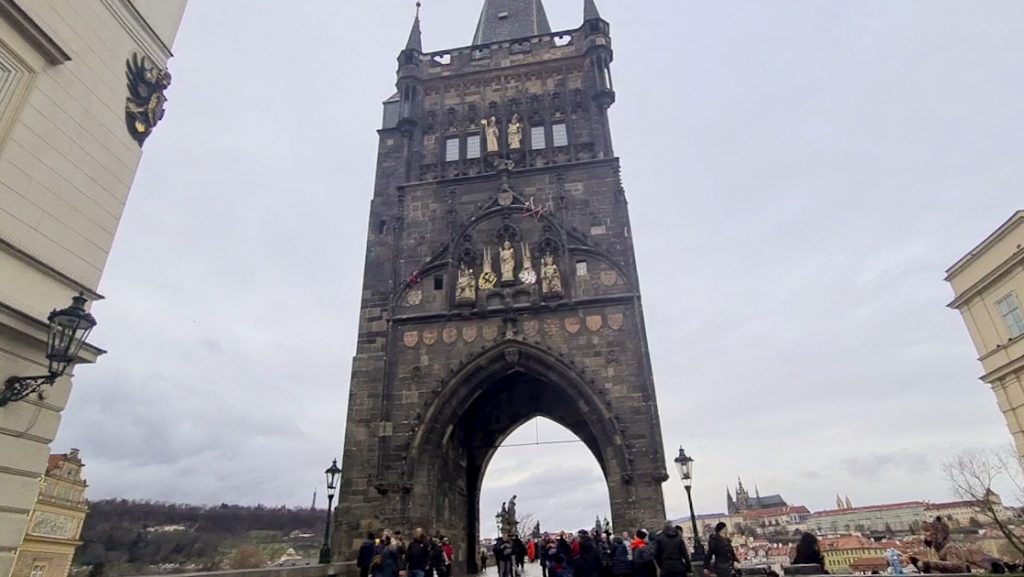
19. Old Town Bridge Tower. On the Old Town side of the Charles Bridge is the Old Town Bridge Tower, one of the finest gateways of its kind. The Old Town Bridge Tower was designed by architect Peter Parler and built in 1357 during the rule of King Charles IV.
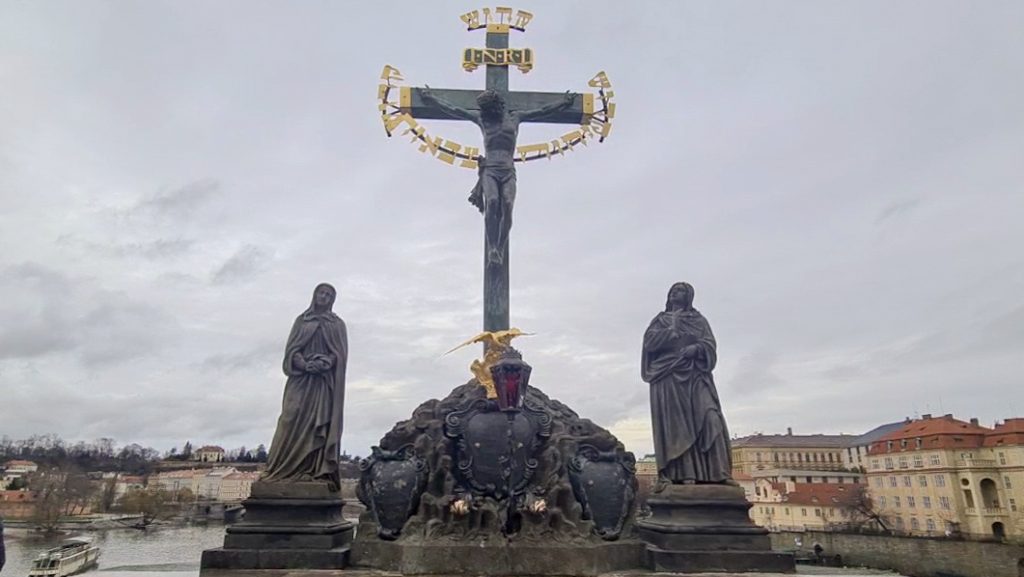
20. Statues. The Charles Bridge’s most distinctive feature is its gallery of 30 statues. The religious figures were placed on either side of the bridge between 1683 and 1714. The statues are mainly in Baroque style. Today, all the statues are replicas, the originals of which are preserved in the city’s museums.
21. Malá Strana Bridge Tower. The Malá Strana Bridge Tower, built in the 15th century, serves as the entrance of Malá Strana from the Charles Bridge.

22. Karlovy Lázně. Did you know Prague is also known for its nightlife? We visited Karlovy Lázně, the biggest music club in Central Europe. It’s a huge 5-storey nightclub in a large renovated 15th century building. The Robotic Bar on the second floor is run entirely by robots. The robot arms grab bottles hanging from the ceiling to mix different kind of cocktails for you.
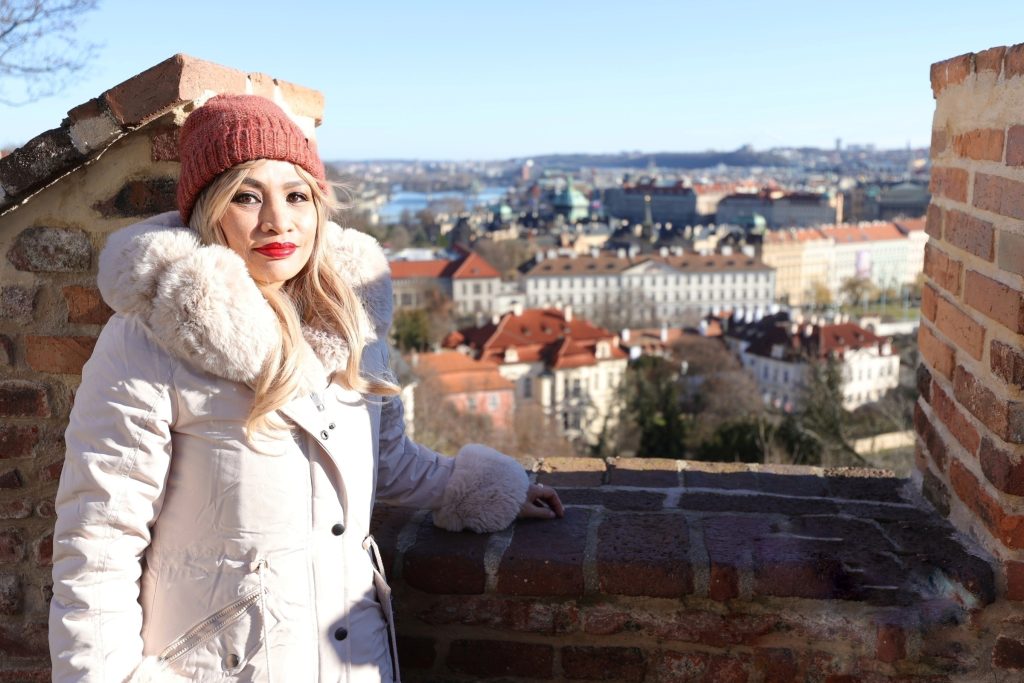
23. Prague Castle. Prague Castle is a castle complex built in the 9th century, which contains a large collection of buildings, including palaces, churches and gardens. Prague Castle is the largest ancient castle in the world. It is the official office of the President of the Czech Republic. Prague Castle is a fascinating place for a leisurely stroll.
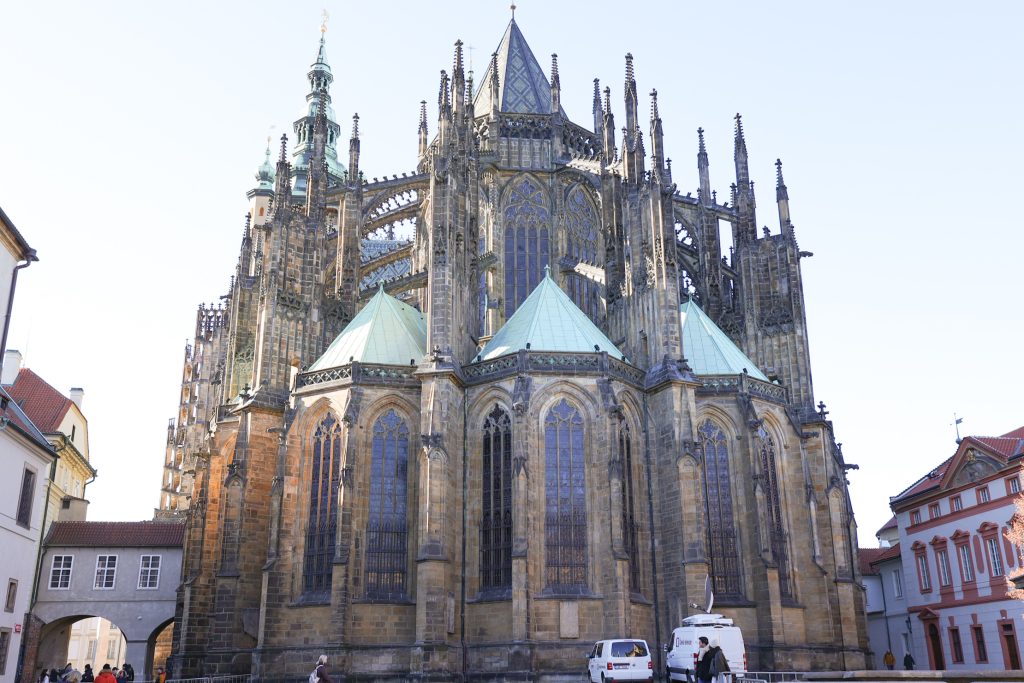
24. St. Vitus Cathedral. The majestic Gothic St. Vitus Cathedral, located within Prague Castle, is the largest and one of the most important monuments in the Czech Republic. The underground royal thombs are the resting place of many Bohemian kings and Roman emperors. The coronation ceremony of Czech kings and queens also took place at the St. Vitus Cathedral. The St. Vitus Cathedral is under the ownership of the Czech governement.
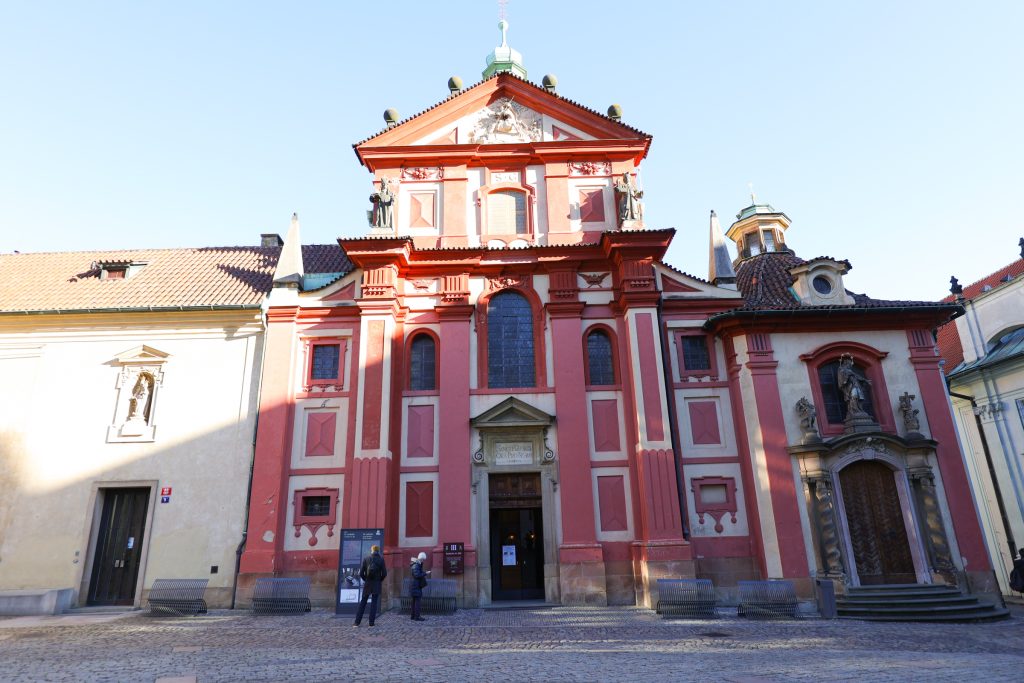
25. St. George’s Basilica. The St. George’s Basilica, founded by Prince Vratislav (915-921) is the oldest, best-preserved Romanesque church building within Prague Castle.

26. Old Royal Palace. The Old Royal Palace is one of the oldest parts of Prague Castle. The original residential building dates back to the 10th century and was primarily made of wood. In the 11th century, the wooden building was fortified into a stone Romanesque palace by prince Soběslav I. The palace was the seat of Bohemian princes. In the 14th century, King Charles IV rebuilt the building into a Gothic palace, which became a royal and imperial seat. The highlight of the Old Royal Palace is the massive Gothic Vladislav Hall with beautiful vaulted ceilings with stellar ribs.
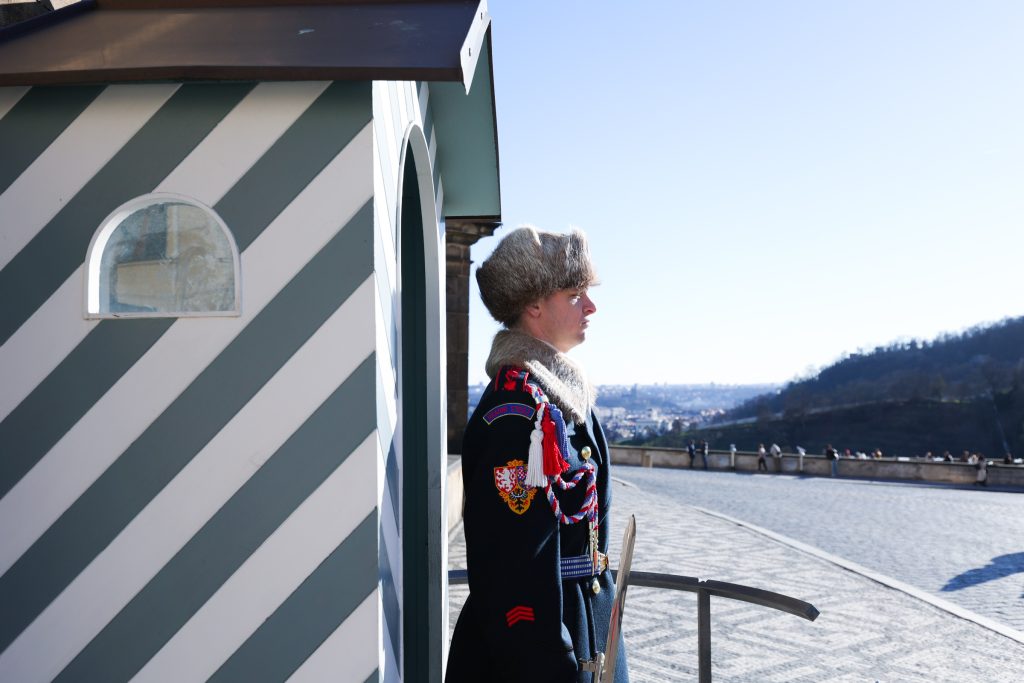
27. Ceremonial Changing of the Guard. The ceremonial changing of the guard, including a fanfare and a flag ceremony, happens daily at 12.00 pm in the first courtyard of Prague Castle. The sentries at Matthias Gate, the main entrance of Prague Castle at Hradčany Square side, change on the hour from 7.00 am till 08.00 pm during the summer season and from 07.00 am to 06.00 pm during the winter season.
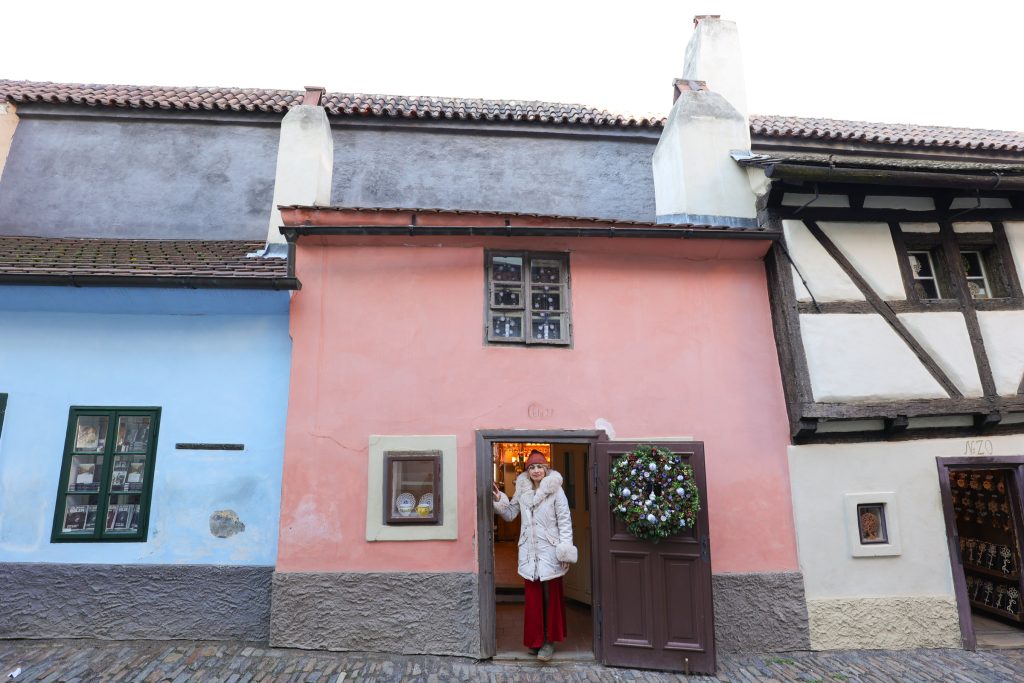
28. Golden Lane. The Golden Lane is named after the goldsmiths who used to live here in the 17th century. This short narrow street, located in Prague Castle, is one of the most picturesque streets in Prague. The tiny brightly colored houses were built in the late 1500s for King Rudolph II’s castle guards.
29. House 22: Franz Kafka. Writer Franz Kafka lived from 1916 to 1917 at the Golden Lane in house no. 22.
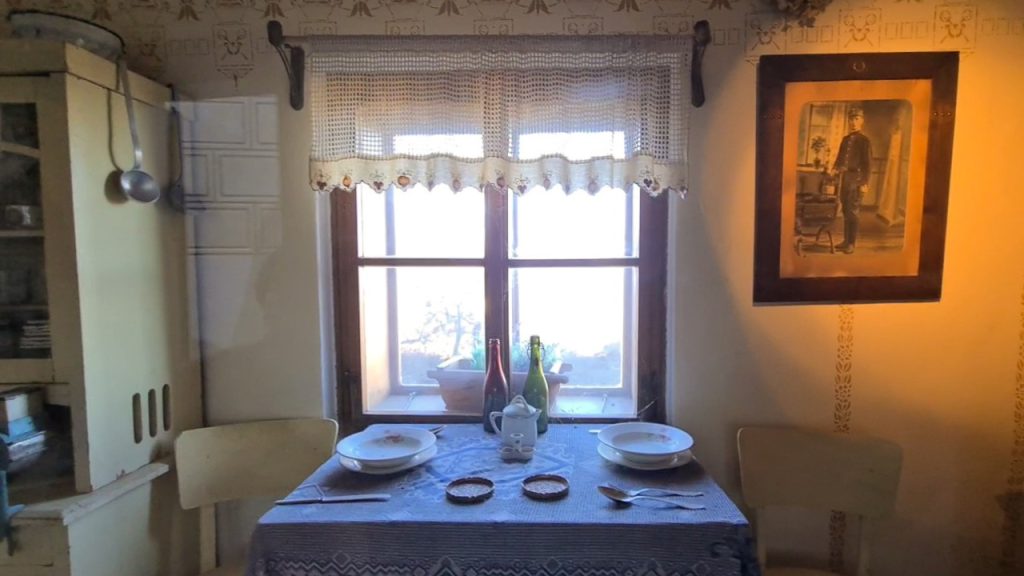
30. House 14: Fortune Teller Matylda Průšová. Since 1918, the famous fortune teller Matylda Průšová, also known as Madame de Thebes, lived in house no. 14. She died in the hands of the Gestapo, because she predicted the downfall of the Third Reich.
31. Metro Cafe Malostranská. You can eat he most delicious goulash soup with garlic bread at Metro Cafe Malostranská, located next to the metro station near Prague Castle. We also tasted a delicious cake filled with creamy mascarpone layers and topped with crunchy hazelnuts & walnuts.
32. Malá Strana. Founded in 1257 on the slopes of Prague Castle, the Malá Strana district is one of the most historic neighbourhoods of Prague. Hardly any new building has taken place here since the late 18th century and the palaces, old houses, squares and churches look exactly as they did when they were first built. Malá Strana is separated from the Old Town by the Charles Bridge.
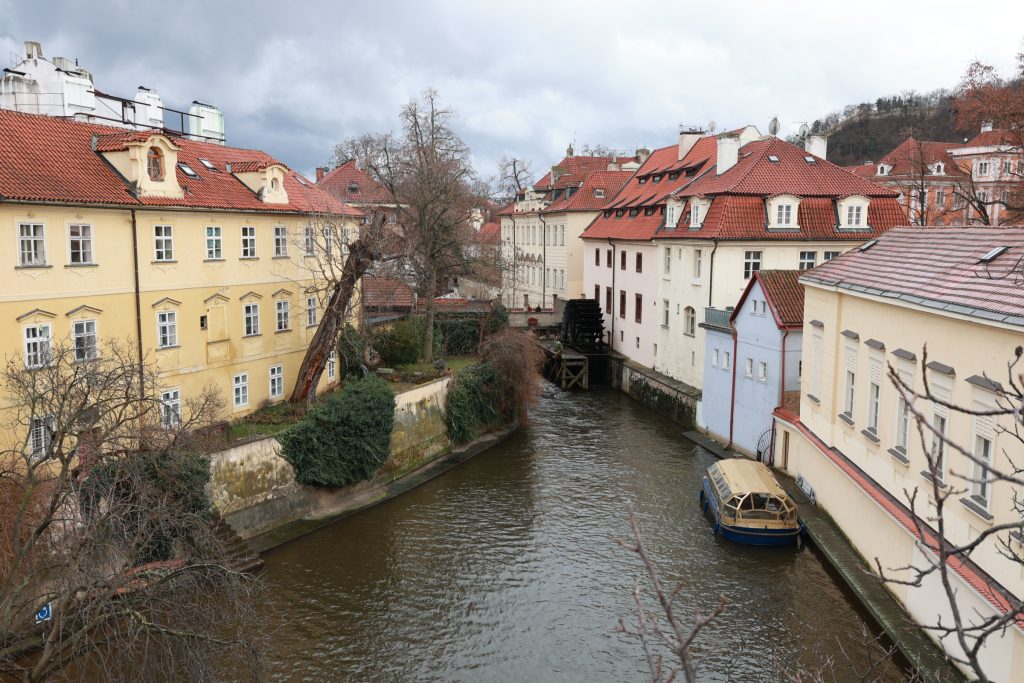
33. The Grand Priory Mill. Built from 1597 till 1609, the Renaissance Grand Priory Mill is a mill with a large wooden wheel submerged in the Devil’s stream (Čertovka). It is decommissioned these days, but it continues to turn slowly in the sluggish waters of the former millrace.
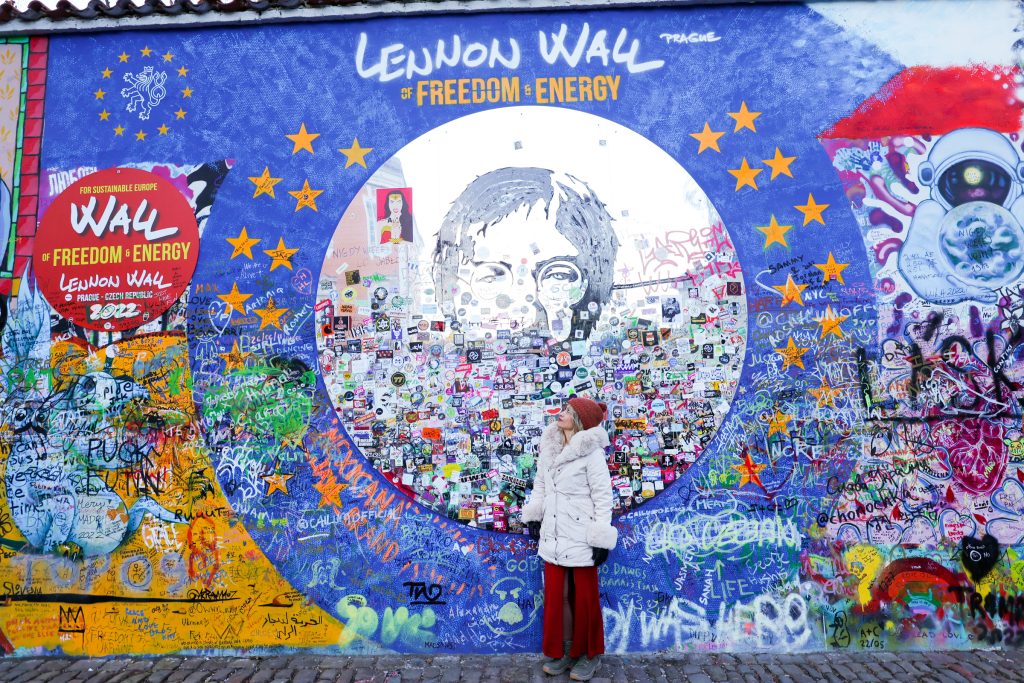
34. Lennon Wall. Located on Velkopřevorské náměstí, the Lennon Wal is a wall full of John Lennon-inspired graffiti created after Beatles member John Lennon was murdered in 1980. The Lennon Wall is a symbol of freedom, love and peace.
35. Petřín Hill. The Petřin Hill is a wooded hill rising above Malá Strana. The hill is covered with many parks, providing welcome greenery and an escape from the hustle and bustle of the city.
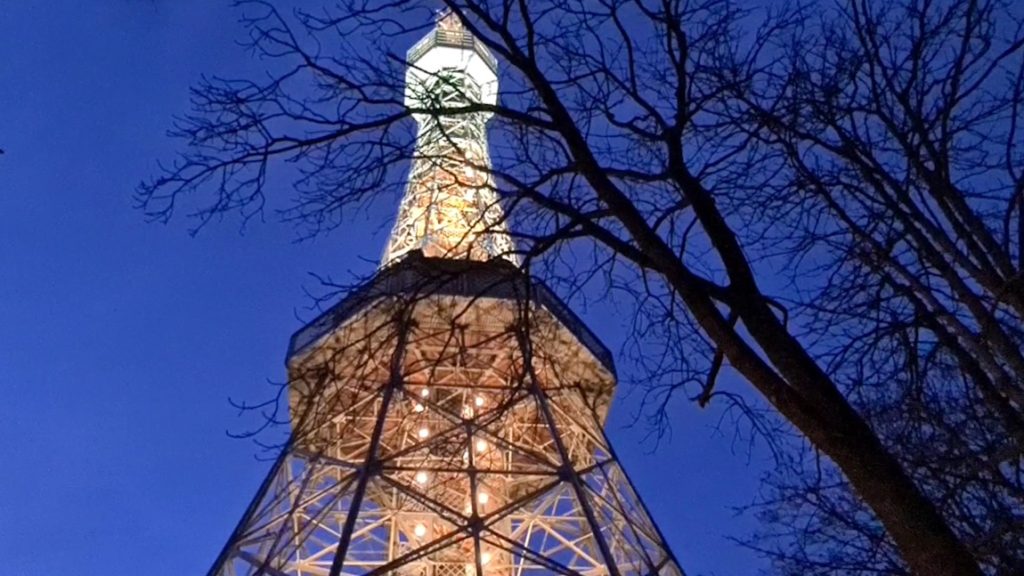
36. Petřín Lookout Tower. The iconic Petřin Lookout Tower is a miniature imitation of the Paris Eiffel Tower, built for the 1891 Jubilee Exhibition. The Petřin Lookout Tower is located on top of the Petřin Hill. With a height of 60 meters, you can climb the tower via a spiral staircase of 299 steps, which leads to the viewing platform. You can also take the elevator. The view from the top is fantastic with all of Prague’s major sights below.
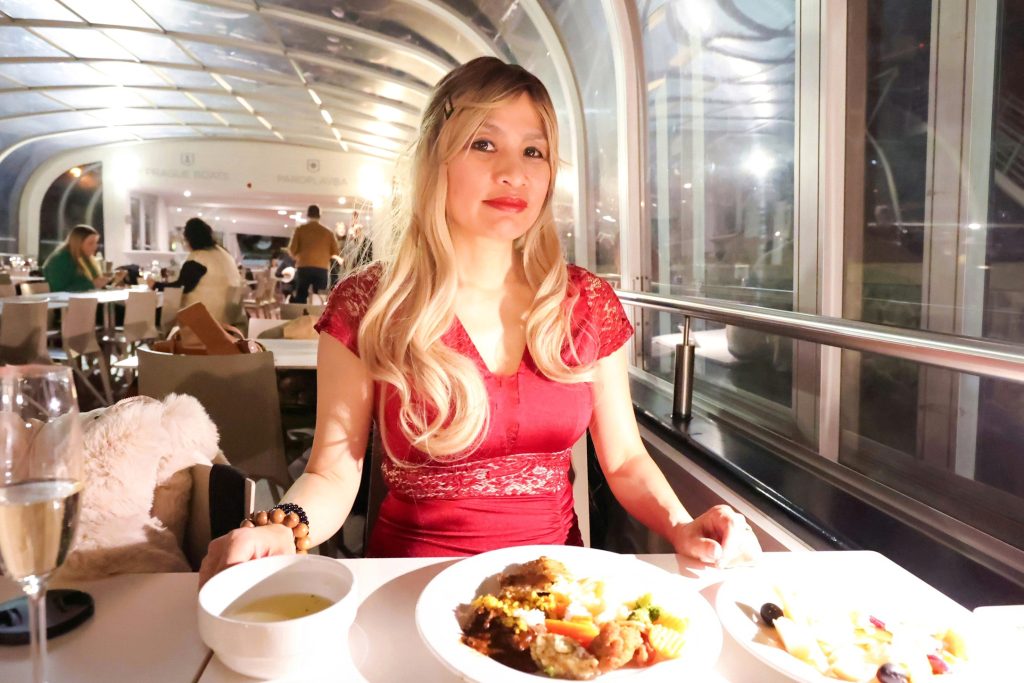
37. Dinner Cruise. A great way to discover Prague by night while enjoying a delicious dinner is with a dinner cruise. We had a 3 hour Crystal Dinner Cruise on a glass boat including a prosecco welcome glass, dinner buffet, live music and a panoramic view on Prague through the glass roof. We expected a bit more from the food but all in all it’s a great experience. Especially, because you can go out on the deck at the back of the boat to enjoy the view.
38. Czech Beer Tasting at Fat Cat. The Czech Republic has the largest beer consumption per capita in the world. Beer is to the Czech what wine is to the French. You should have a beer in Prague, even if you think you don’t like beer (like me). We did some beer tasting at Beerhouse Fat Cat in the Old Town of Prague. The staff are super friendly. We ordered the Cherry Beer (Rohozec), a cherry infused light beer, which tasted surprisingly good.
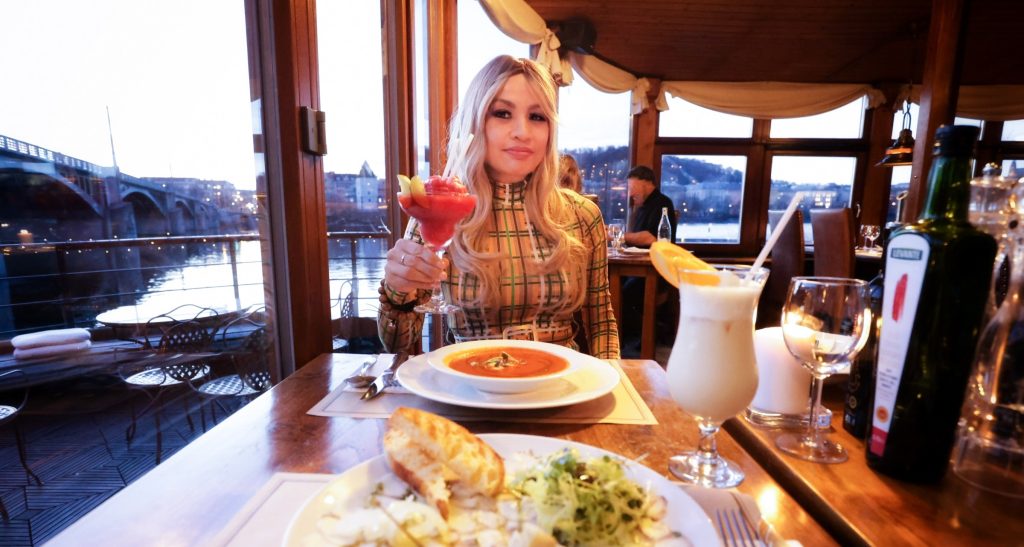
39. Boat Hotel Matylda. If you want to spend the night at a more special location, that is the family-run Boat Hotel Matylda, located near Vltava River. We had booked a standard room, but were upgraded to the more spacious executive room at no extra cost. Our thanks goes to Camille. On the boat restaurant they have a menu of delicious Italian food served by friendly staff. Their famous Tiramisu dessert is irresistible and the cocktails are also very tasty.
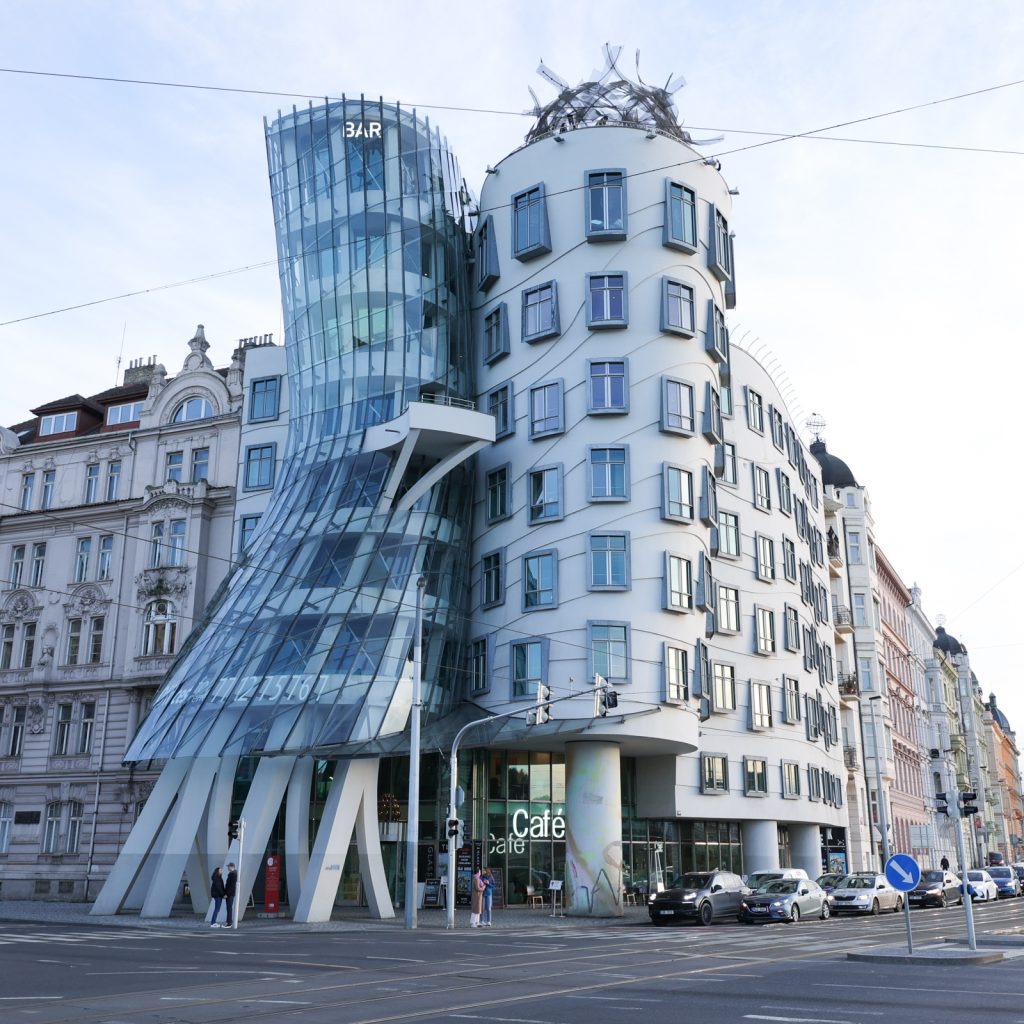
40. Dancing House. Seen from Boat Hotel Matylda is the famous Dancing House, built between 1992 and 1996. This extraordinary building is nicknamed Fred and Ginger, as it resembles the famous dance couple Fred Astaire and Ginger Rogers. On the site of the current Dancing House stood a house that was accidentally destroyed by the American bombing of Prague in 1945.
41. Municipal House. Built between 1905 and 1912, the Municipal House is Prague’s most prominent Art Nouveau building. The exterior is richly decorated with stucco and allegorical art. The Municipal House is located on Náměstí Republiky in the center of Prague.

42. Head of Franz Kafka. The giant rotating Head of Franz Kafka, also known as the Statue of Kafka, is a sculpture created by David Ćerný in 2014, depicting writer Franz Kafka. The Head of Kafka, located near the Quadrio Shopping Center, rotates every hour, the first quarter of that hour.
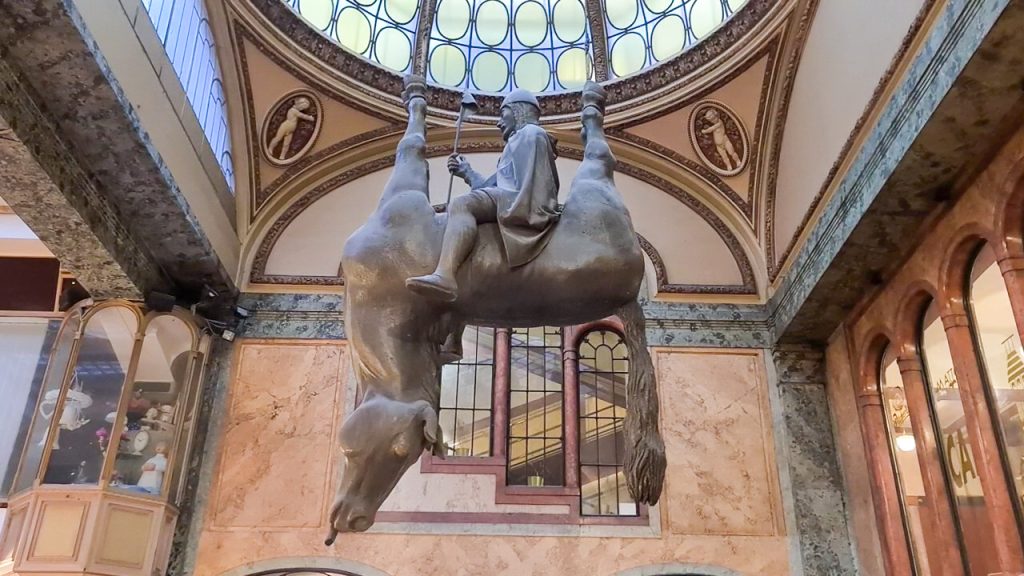
43. Lucerna Palace and Passage. One of Prague’s most engaging modern palaces is Lucerna Palace, built between 1907 and 1920 in the Art Nouveau style by entrepreneur Vácslav Havel. Today, Lucerna Palace and Passage is an entertainment and shopping center. From the ceiling of the Lucerna Palace and Passage hangs the sculpture of St. Wenceslas riding a dead upside down horse. It’s a mocking reference to the famous statue of St. Wenceslas on Wenceslas Square, only a few meters away from the Lucerna Palace and Passage.
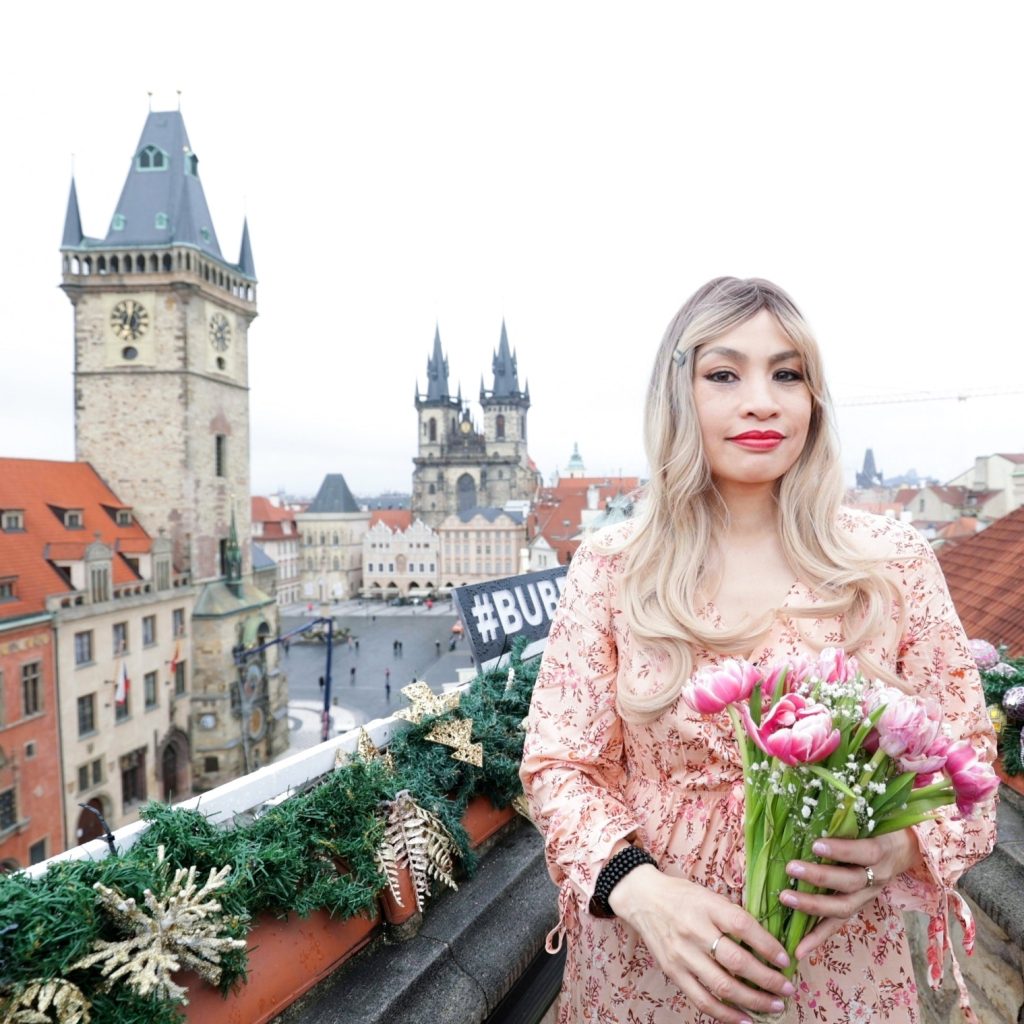
44. Hotel U Prince. The roof terrace of Hotel U Prince offers a fantastic view over the Old Town Square. It is a great place to take beautiful (Instagram worthy) photos. That being said, it is also a tourist trap. We went for breakfast on the roof terrace. When my friend asked an employee if the heating could be turned on because of the cold on the roof terrace, he reacted very angrily. Fortunately, the waiter who served us was very nice. The food, on the other hand, didn’t taste that good. If you want to enjoy the view, which is really worth it, I advise you to make reservations in high season and order something small. You are required to order something. I hope they will improve their service and the quality of their food.
45. Josefov. Josefov, encircled by the Old Town and the Vltava River, is the former Jewish neighbourhood of Prague with a history on its own.
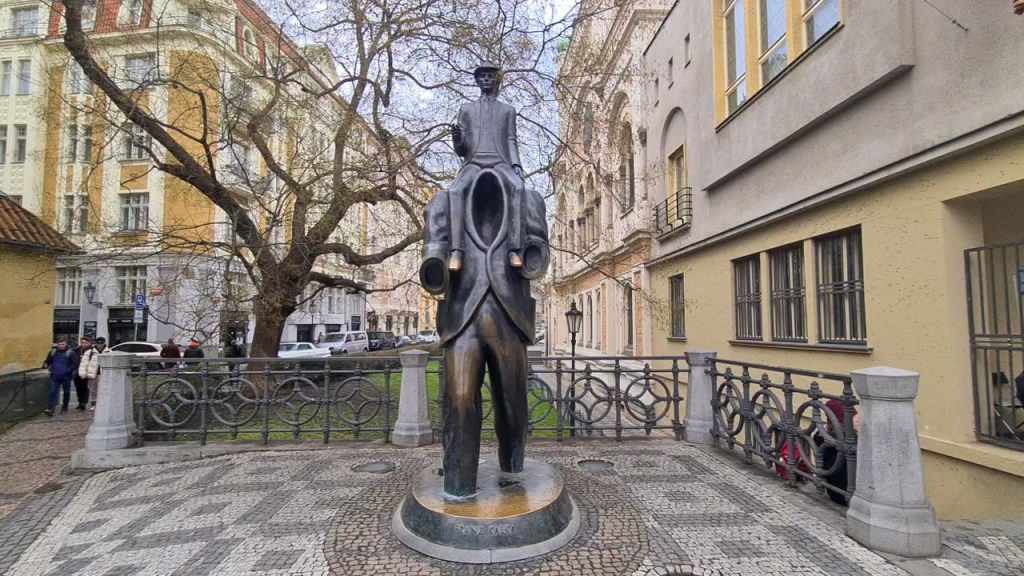
46. Statue Franz Kafka. The Statue of Franz Kafka, located in Dušni Street, was reveiled in Josefov in 2004. Franz Kafka sits on the shoulders of a headless man and walks through the night streets of Prague. The bronze statue of Franz Kafka is inspired by Franz Kafkas’ early short story ‘Description of a Struggle’.
47. Jewish Museum. Josefov is home to the Jewish Museum which consists of four historic synagogues (Maisel Synagogue, Pinkas Synagogue, Klausen Synagogue and Spanish Synagogue), the Old Jewish Cemetery, the Ceremonial Hall and the Robert Guttmann Gallery. Built around 1270, the Old New Synagogue is the oldest synagogue in Europe and one of the earliest Gothic buildings in Prague. It is not a museum as it is still used for religious services.
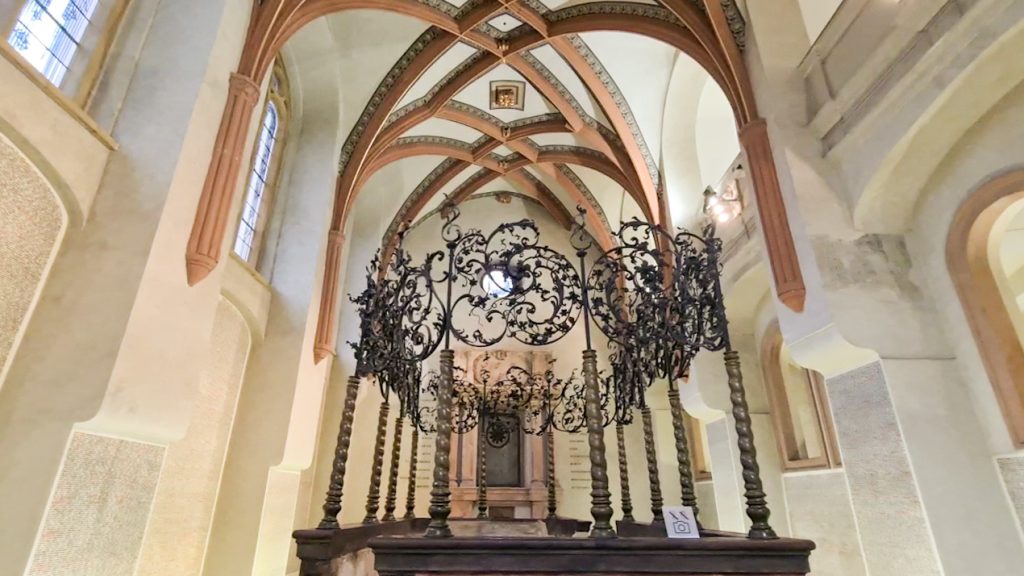
48. Pinkas Synagogue. Built in 1535, the Pinkas Synagogue now serves as a memorial of the Jewish Czechslovak victims of the Nazis. The names of the 77.297 who did not return are handwritten on the Synagogue walls.
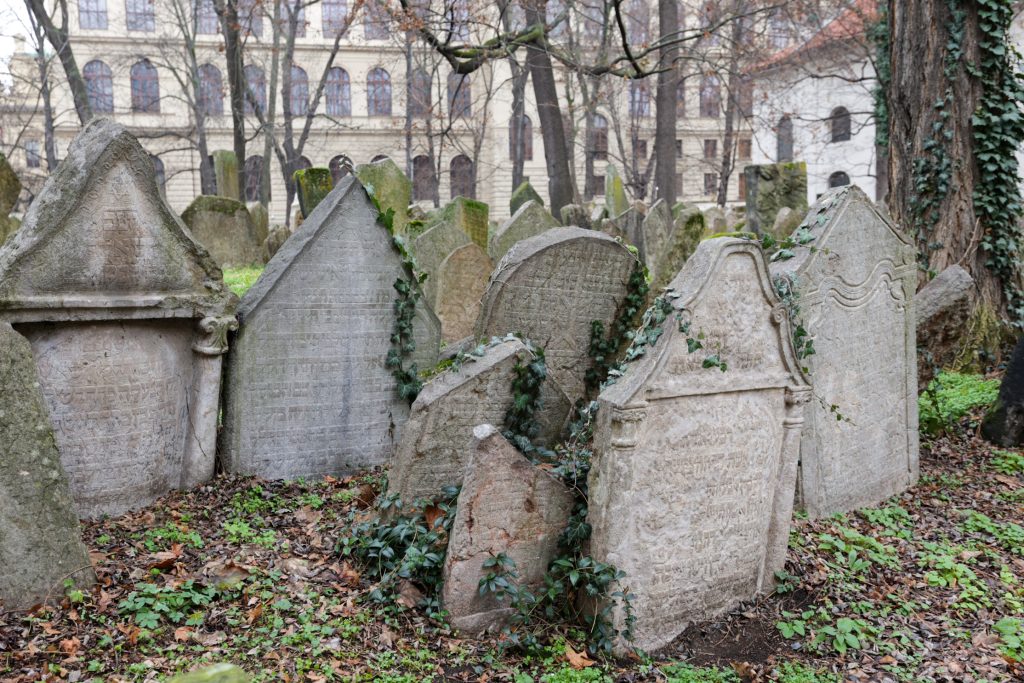
49. Jewish Cemetry. Founded in 1478, the Old Jewish Cemetery was the only cemetery permitted to Jews for over three hundred years. Because space was limited, bodies were buried on top of each other. There are places where as many as twelve layers now exist. There are more than 12.000 gravestones in the cemetery, yet the total number of Jews buried here is over 100.000.
50. Shanghai Duo Wei. A great Chinese restaurant is Shanghai Duo Wei on Jakubská Street. We did some shared dining and had different types of dishes like fried rice, noodles, beef and vegetables with prawns. We only had twenty minutes to eat all those dishes, because we had to leave in time to collect our luggage from the hotel and run to the train station, but we managed to finish almost all of the plates. That’s how good it tasted. Qiánbēi (Cheers)!
This is the end of our trip in Prague. It’s a long list, but if you’ve come this far; chapeau! I hope you will also see and experience a lot of beautiful things in Prague.
If you want to watch my video, click on the link: Prague | Top 50 things to do when you’re in Prague.
